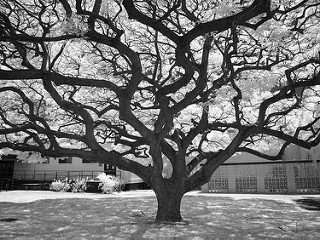
In January Joe Patti (Butts in Seats) wrote an exceptionally valuable post (Trees Come with Unexpected Baggage). It was about a nonprofit organization in Detroit planting trees in neighborhoods. It turns out that, for a wide variety of reasons, many people did not want the trees.
For many of us, a free tree sounds like an unequivocally good thing. Why would anyone not want one? It turns out that there are a number of reasons. But a common theme in people’s concerns was that the neighborhoods had not been part of the process of deciding to do the project in the first place nor how it should be implemented. “People felt someone else was deciding what should be planted and where without having any conversations with the people who would have to live with the trees.” It wasn’t that they didn’t understand the value of trees. They didn’t trust the outsiders who were descending upon their homes.
The obvious point Mr. Patti was making is that arts organizations not infrequently make the same mistakes in attempting to deal with new communities. They assume they know what is needed and then they deliver what “they know is best” without consultation or discussion. And then are surprised when the response is poor.
I almost did not write this follow up because the points were made so well. However, this is such an important issue that repetition is helpful. We’ve got to come to grip with the fact that when it comes to dealing with new communities we are often clueless and can easily trip all over ourselves because we don’t know them. (I’m reminded of Margy Waller’s post from several years ago, We Are from the Arts and We’re Here to Help.)
Plus there are two things I’d like to amplify here. The first is the issue of trust. We can never forget that for many people, “the arts” are associated in lockstep with power and privilege. Whether or not this is fair is irrelevant. Our industry is tied to the 1% in the minds of large segments of the population. And that association gets in the way of building relationships. Before we try to “plant trees” in their midst, much work needs to be done to get to a simple ground zero of trust.
The other issue is totally self-inflicted. We have an unexamined belief in the inherent value of the arts that we present and that arts’ value to anyone we meet. This is totally understandable, we would not be in the business if we did not believe it. However, this is also the foundation of attempts to do “outreach” to new communities–providing arts enlightenment, kinda like 19th Century missionaries to Africa. It is rooted, consciously or unconsciously, in what I think I may begin to call Aesthetic Superiority Syndrome.
This is counter-productive for a variety of reasons. One is it diminishes us. It gets in the way of understanding the merits of artistic expression of “foreign” cultures. I vividly remember years ago hearing that there was a hip hop musical about the life of Alexander Hamilton in development. My mental response was “Yeah, right.” I now understand how very, very wrong I was. Greg Sandow has for years been pushing the classical music world to recognize the brilliance of other musics. (Classical music is the world from which I come.) I have been a cheerleader for his work but did not recognize my own shortsightedness. How much poorer I was/we are for this.
Not only does this diminish us, it also gets in the way of building bridges. If we don’t recognize that our art is not the only art of significant merit, the new communities with which we try to connect will spot our dismissiveness and turn deaf ears to our suggestions. They have artistic traditions of which to be justifiably proud. Seeking those out is one way to create connections.
The bottom line in engagement is, as always, talk with (not to) them. (Although see that last sentence in this paragraph.) Engage people with humility and respect and seek reciprocity. (If you ask much of them to understand your work, invest that much time in understanding them.) But eventually seek to move from thinking of them as them to thinking of them as one of us.
Engage!
Doug
Photo:

